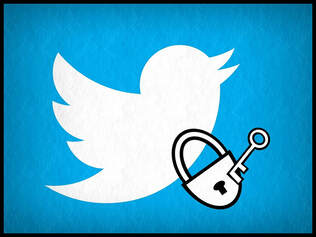 I caught a wurmple yesterday. No, it’s not a disease or a rare insect or grub. It’s a Pokemon. For the last week, I’ve played Pokemon Go everyday during my walk. I’m really out-of-shape, and for a guy who’s nearing 50, kicking this old butt back into shape is a necessity. The problem is that I hate exercise, and I hate “walking” exercises even more. As I begin my billionth attempt at a regular routine, history proves I should have missed at least one or two days by now, or quit the regimen altogether. Not this time. I haven’t missed a walk in seven days. Maybe the better phrase today is “I hated walking,” because it all changed when I reloaded Pokemon Go to my phone for the first time in two years. You might recall a column I wrote in July 2016 about the new game. Pokemon Go was all the rage that summer, in part because it was the first mass adoption of an augmented reality (AR) game for mobile devices. AR is different from virtual reality (VR). AR technology changes the view of your “real” surroundings by overlaying an image, typically an animated graphic. You get a composite view of the world as opposed to the immersive view you get in VR. As I found out, it can be tricky (and slightly dangerous) to play Pokemon Go during your walk, so here are a few tips to consider: 1. Looking down at your phone while you’re walking is typically not advisable. If you don’t believe me, search YouTube for a few humorous examples. Be sure you’re in wide-open spaces, on familiar terrain, and far away from roads and areas congested with pedestrians. You don’t want to embarrass yourself, or worse, get hurt. 2. Shut off the AR. Trying to catch Pokemon while walking in AR can be disconcerting, especially for walkers who lose their balance (again, stay away from roads). Toggle the “AR” switch in the upper right hand corner of the capture screen to turn on the traditional game mode. 3. Timing my walks used to be tedious, but I shoot for 30-minutes each session. Aside from timing and tracking steps in a separate app, there are two items you can use to countdown half-hour walks. First, try the “Incense” item to emit an aroma that attracts Pokemon to your location for 30 minutes (yes, it’s a “virtual” aroma). Second, add the “Lucky Egg” item to earn double points for 30 minutes. You can watch countdowns in the main Pokemon Go screen. 4. Don’t run while playing Pokemon Go. It’s not safe and the app will assume you’re driving. Pokemon Go is available for Android and iOS devices. It’s free unless you make in-app purchases to advance your game play.  When I walked into the living room, throw pillows were on the floor, furniture was overturned and an area rug was pulled up on one side. Had it not been for my youngest kid sitting quietly in the next room, I’d have assumed we were being robbed. Instead, a small curly-hair head peeked over the upended couch with a wry smile, “Oh, hi Dad.” My soon-to-be 12-year-old daughter was on the hunt for what I assumed was something very precious: her smartphone. I was right. But what she said next is what really surprised me. “When did you lose it,” I asked. “A few days ago, I think. I don’t remember,” she replied. A few days ago?! How can you not remember?! I didn’t say that out loud. Instead I joined in the hunt, half-smiling to myself that my pre-teen daughter could be without her phone for such a long period without going into some deep depression or panic. I mean, don’t we all freak out a little when we lose our phones? They’re attached to our bodies on a near constant basis. I don’t even put mine in my pocket much anymore. It’s part of my hand. To borrow a line from the great media philosopher Marshall McLuhan, my phone is, in many ways, an extension of my arm. So, losing my phone should be akin to cutting off my hand. Now I realize how ridiculous that may sound to some of you. But I assure you there are others who read this and say, “Yep, that’s exactly how I would feel.” For my daughter, losing her phone, “felt kind of good,” and being disconnected from the world was liberating. That disconnection she felt was an opportunity to be connected to something or someone else. I went to Facebook a few weeks ago and asked my friends, “How many of you have lost your phones and, instead of going into a deep panic, said, ‘awww, [forget] it, I didn’t need it anyway?’” Evenly split between those who said they would freak out and those who would welcome the break, one friend calmly messaged me to say, “I just read this on my laptop and panicked for a second. I had to check my purse to make sure I had my phone. LOL!” Others were far less concerned. “I did that at work the other day,” my friend Jaietta noted in a post. “I figured it was at home. But it was really freeing to not be tethered to it.” My daughter found her phone. Turns out our youngest daughter hid it in a mound of blankets as a (very lengthy and ineffective) prank. What I found is that my pre-teen daughter has a potentially lucrative future career in teaching tech-loss coping skills.  A new report from LinkedIn suggests that women and men have different job search experiences on the professional social media network. LinkedIn analyzed billions of interactions between companies and job seekers to better understand how gender impacted the job-search process, from the moment the job was posted to the point it was filled. “The results show that while women and men explore opportunities similarly, there’s a clear gap in how they apply to jobs – and in how companies recruit them,” the report stated. Women and men were equally open to new job opportunities (88 percent and 90 percent, respectively), and, on average, viewed a similar number job opportunities (women viewed 44 postings; men viewed 48). But the similarities ended there. For example, women tended to be more selective when applying for these jobs. “While [women and men] browse jobs similarly, they apply to them differently,” the report concluded. “In order to apply for a job, women feel they need to meet 100 percent of the criteria while men usually apply after meeting about 60 percent.” LinkedIn was quick to point out that its behavioral data – pages we visit, profiles we view, links we create – backs this up. They would know. LinkedIn collects volumes of data on how we navigate their platform. For example, women were more likely to screen themselves out of jobs based on the posting. Consequently, they ended up applying to fewer jobs than men. To encourage more women to apply, LinkedIn says companies should be thoughtful about the requirements they list. Companies that do this self-reflection should ask “what’s truly a must-have” and “what’s merely a nice-to-have.” Women were also 26 percent less likely than men to ask for a referral. “Recruiters report that [referrals] are the top source of quality hires. However, women are far less likely than men to ask for a referral to a job they’re interested in, even when they have a connection at the company,” the report concluded. “Make sure your pipeline is a healthy blend of referrals, active applicants and sourced candidates.” LinkedIn also found that recruiters accessed men’s profiles more regularly, and they attribute this to the unconscious biases ingrained in the process. However, after examining member profiles, recruiters found women to be just as qualified as men. Recruiters also tended to reach out to both genders with job opportunities at a similar rate. To combat selection bias, more companies are using a kind of “anonymous” search process, removing names and photos that could reveal gender. Recruiters can easily disable “view candidate photo” feature within the LinkedIn Recruiter platform. While the report lays out a clear path forward for companies and job seekers, there’s still work to do. Thankfully the advice LinkedIn offers in this report should help recruiters create better job-search experiences, regardless of gender.  Twitter is one of the easiest social media platforms to use. If you’ve never used Twitter, take five minutes to download the app and set-up an account. In a few minutes you’ll be following accounts, liking and retweeting posts, posting your own content, gaining followers of your own, and diving deeper into the world of news, entertainment, opinions and more. If you’re a seasoned Twitter user – posting news stories, engaging customers for a business, trolling political leaders – you’re well aware of the small number of features required for operating an account. Even with this ease-of-use, people still ask some very important questions about how to use Twitter to reach the most fans, to gain new followers, and to get users to actually read and react to posts. This was the case last week during our second social media essentials lunch session at YSU. Kati Hartwig, YSU’s coordinator of social media and digital marketing, led a 90-minute excursion through the basics of Twitter. You’re probably asking yourself, “Wait, didn’t you say it only takes five minutes to figure it out?” This is true, unless you want more from Twitter, to dive deeper into the abundant, sometimes “hidden” features offered for managing and analyzing tweets and other account activity. This would also be true if it were not for the question that social media marketing gurus have grappled with since the platform’s birth (and with little consistency in the answer the give us): “What’s the best time to post a tweet?” During Hartwig’s talk, and during our side conversations, that question came up over and over again. Of course, it’s not the first time it’s been asked, and even with the simplistic nature of Twitter’s interface, it’s a question that still baffles most of us. Google “best time to tweet” and you’ll find seemingly countless bloggers and experts who will tell you to tweet between 1 and 4 p.m., Monday through Friday to gain the most impressions. From someone who has tested this time frame, I’m happy to report this is sound, albeit incomplete, advice. Some additional factors to consider: First, what’s the message, and what content are you using to convey that message (e.g., text, images, GIFs, videos)? Are you targeting a certain demographic? If so, remember that some groups are more apt to be on later at night than midday. Second, the midday time frame is based on geographical location. But if your audience is in another part of the world, it might make more sense for you to adjust to their midday time frame. Run a few tests of your own. Post a series of tweets on different days and times, and check the analytics (click the three vertical lines, bottom right hand side of your tweets). Then you’ll know what times work best for you and your audience.  Twitter is promising more transparency in the political advertisements posted to their platform. Of course, this isn’t the first time Twitter has promised more oversight and stricter policies regarding political tweets, including paid campaign ads. This enhanced policy is an attempt by Twitter to weed out even more fake accounts and misleading ads before the next big U.S. election takes shape. “We continue to be committed to enforcing stricter policies for political advertisers and providing clear, transparent disclosure for ads,” Twitter posted in a news release last week. “This is part of our overall goal to protect the health of the public conversation on our service and to provide meaningful context around all political entities who use our advertising products.” In May 2018, Twitter announced a new political campaigning policy aimed at policing content. The policy applies to content for political campaigns and candidates. It also applies to what Twitter calls “issue advocacy” advertising. In other words, Twitter is policing ads that refer to an election, “clearly identified” candidates, and ads that advocate for some issue of national importance. Identifying a candidate appears easy enough to do under this new policy – their policy simply reads “any candidate running for federal, state or local election.” However, examples of issues of national importance aren’t as clear cut. Twitter’s examples included healthcare, gun control, climate change, immigration and taxes. Advertisers who promote these issues are required to use a “Paid for by” disclaimer, similar to what we see and hear in ads on TV and radio. “We launched our political campaigning policy in the United States to provide clear insight into how we define political content and who is advertising political content,” Twitter reported. “In conjunction, we launched the Ads Transparency Center (ATC).” This means Twitter users around the world can view political ads. We now get greater detail on political campaign ads (i.e., more transparency), including how much money was spent on an ad and for whom the ad was targeted (i.e., age, gender, location, etc.). Last week, Twitter expanded this enhanced transparency to include Australia, European Union member states and India – countries with high political campaign Twitter use. Their plans call for an expansion of the policy to include other regions around the world throughout 2019. “We strongly believe that meaningful transparency is the best path forward for all advertising products we offer, particularly those that are utilized in a political context,” Twitter said. Enforcement of this new policy begins March 11. On that date, campaign advertisers will need to be certified if they want to post political campaign and issue ads. Political campaign advertisers can apply now for certification and go through every step of the process. To get certified as a candidate or issue advocacy advertiser, search business.twitter.com for more details on the process. |
AuthorDr. Adam C. Earnheardt is special assistant to the provost and professor of communication in the department of communication at Youngstown State University in Youngstown, OH, USA where he also directs the graduate program in professional communication. He researches and writes on a variety of topics including communication technologies, relationships, and sports (with an emphasis on fandom). His work has appeared in Mahoning Matters as well as The Vindicator and Tribune-Chronicle newspapers. CategoriesArchives
July 2023
|
 RSS Feed
RSS Feed